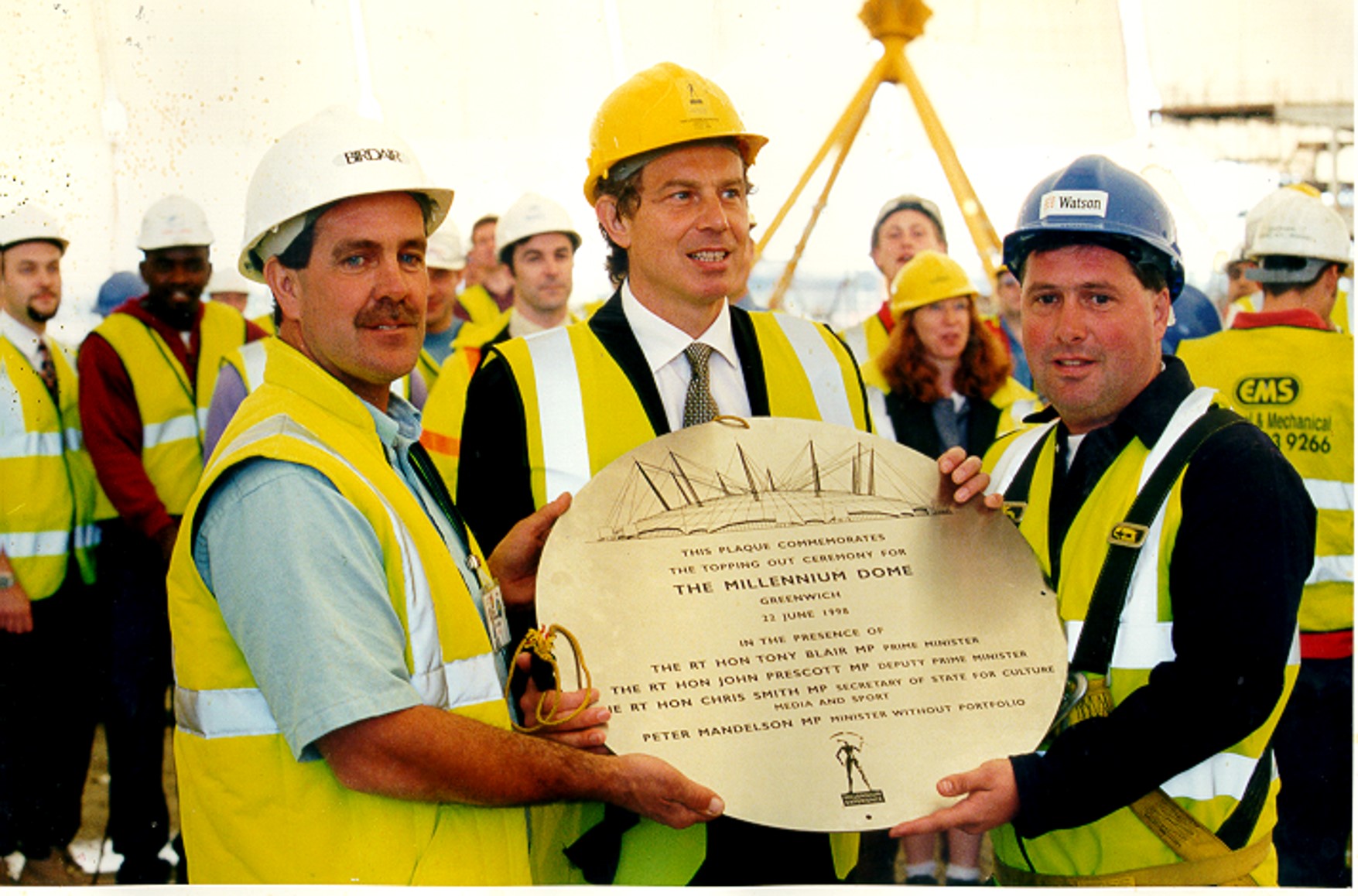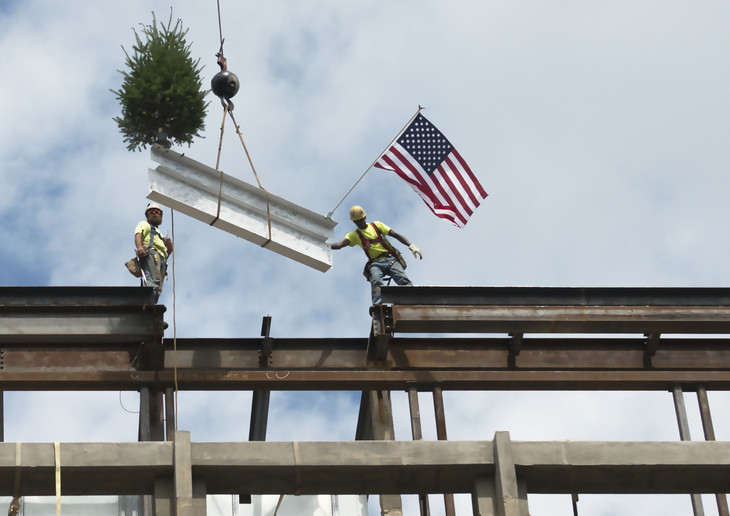Topping out
The term ‘topping out’ refers to the installation of the final piece of structure, or the completion of the roof on a building, bridge or other large construction. It signifies that the structure has reached its maximum height (not that the project has reached completion). In the UK, topping out may be marked by the installation of a plaque or other feature recording the occasion and is often used as a PR event for the media.
The significance of topping out is believed to date back to pre-Dark Age Scandinavia, where folklore suggests there was a practice of placing a tree on top of a new building to appease the tree dwelling spirits of their displaced ancestors. This became a celebration as large numbers of the community would often assist with completing a new building, and it was a way the building owner could show their appreciation. The Scandinavian invaders of the mid-to-late 8th century, introduced the practice to England.
In 14th century England, topping out ceremonies were marked by a yew tree branch being placed at the highest point of the building. Such occasions were included in the writings of the poet Geoffrey Chaucer. Often the personal flag of the owner would be hoisted on top of the building once the shell was complete.
In modern construction, topping out ceremonies are celebrated in different ways around the world:
- Jordan: Builders hold a religious ceremony followed by a feast.
- Denmark: The roof of the building is decorated with evergreen garlands.
- America: The final structural piece is often painted white and signed by members of the construction team.
- Germany: Laurels are hung around the chimney of a new house to acknowledge its ‘birth’.
- Brazil: Branches and leaves are fixed to the building.
- Spain: A flag is raised and all workers are invited to a lunch by the boss.
Media representatives are often present at topping out ceremonies on major projects, invited to attend in order to generate interest in the project, as well as celebrate its progress and the achievement of the construction team.

|
| Prime Minister Tony Blair at the topping out ceremony for the Millennium Dome on 22 June 1998. |
[edit] Related articles on Designing Buildings
- Activity schedule.
- Ceremony.
- Certificate of non completion.
- Completion.
- Completion date.
- End of stage report for construction.
- Final certificate.
- Key dates.
- Handing over possession of the construction site to the contractor.
- Handover to the client.
- Milestones.
- Practical completion.
- Programme for building design and construction.
- Scheduling construction activities.
- Sectional completion.
Featured articles and news
The history of building regulations
A story of belated action in response to crisis.
Moisture, fire safety and emerging trends in living walls
How wet is your wall?
Current policy explained and newly published consultation by the UK and Welsh Governments.
British architecture 1919–39. Book review.
Conservation of listed prefabs in Moseley.
Energy industry calls for urgent reform.
Heritage staff wellbeing at work survey.
A five minute introduction.
50th Golden anniversary ECA Edmundson apprentice award
Showcasing the very best electrotechnical and engineering services for half a century.
Welsh government consults on HRBs and reg changes
Seeking feedback on a new regulatory regime and a broad range of issues.
CIOB Client Guide (2nd edition) March 2025
Free download covering statutory dutyholder roles under the Building Safety Act and much more.
AI and automation in 3D modelling and spatial design
Can almost half of design development tasks be automated?
Minister quizzed, as responsibility transfers to MHCLG and BSR publishes new building control guidance.
UK environmental regulations reform 2025
Amid wider new approaches to ensure regulators and regulation support growth.
The maintenance challenge of tenements.
BSRIA Statutory Compliance Inspection Checklist
BG80/2025 now significantly updated to include requirements related to important changes in legislation.
























Comments
Very nice article. I only wished for a picture of the tree in the top of the Scandinavian construction, since it might be an outstanding image!